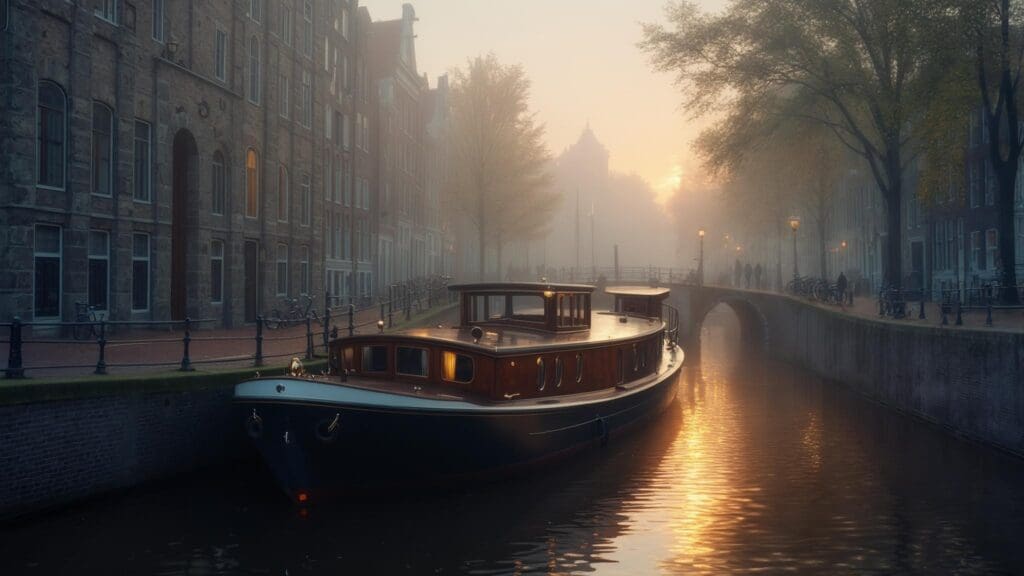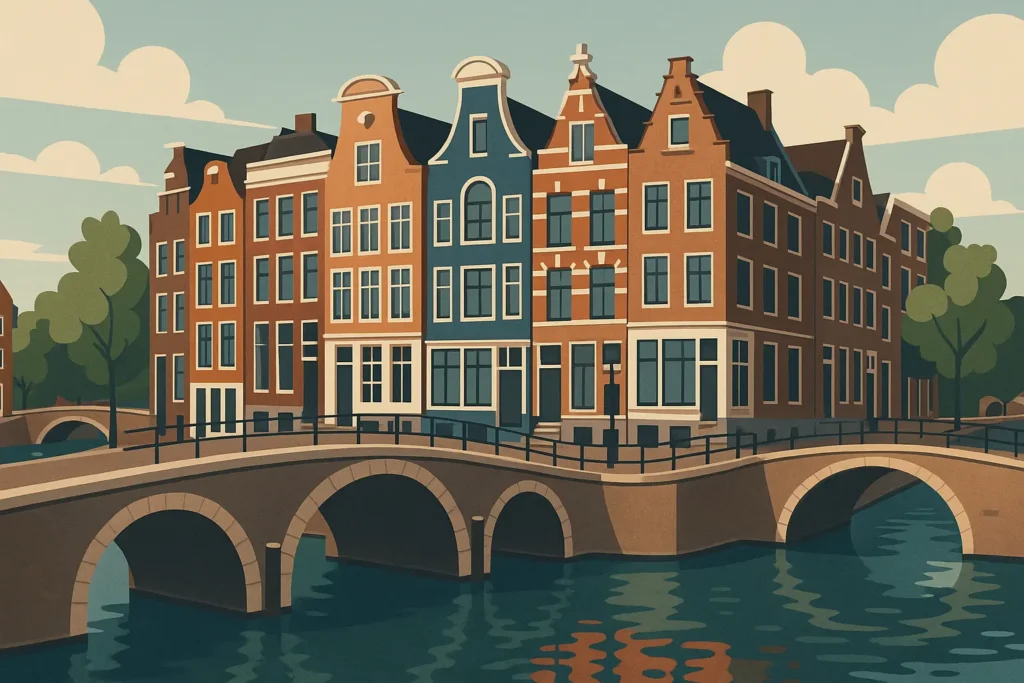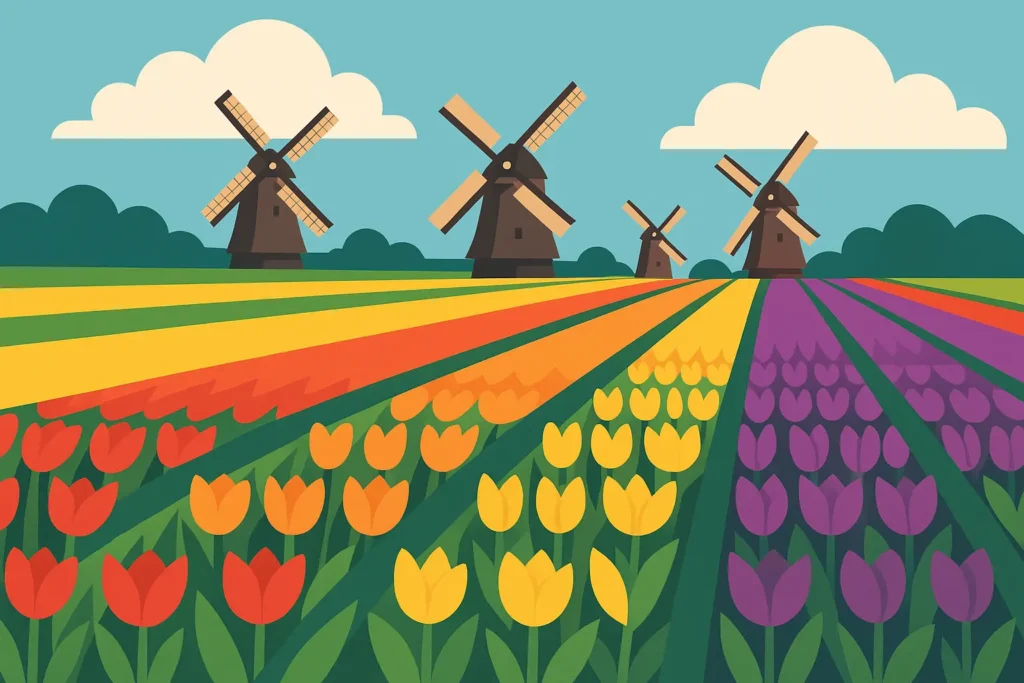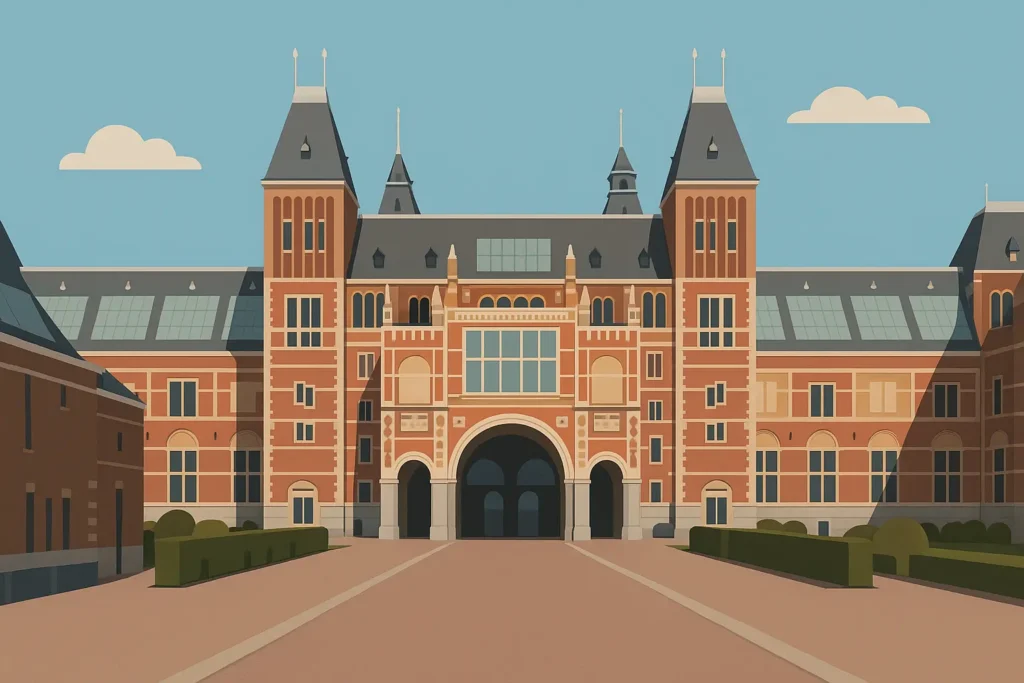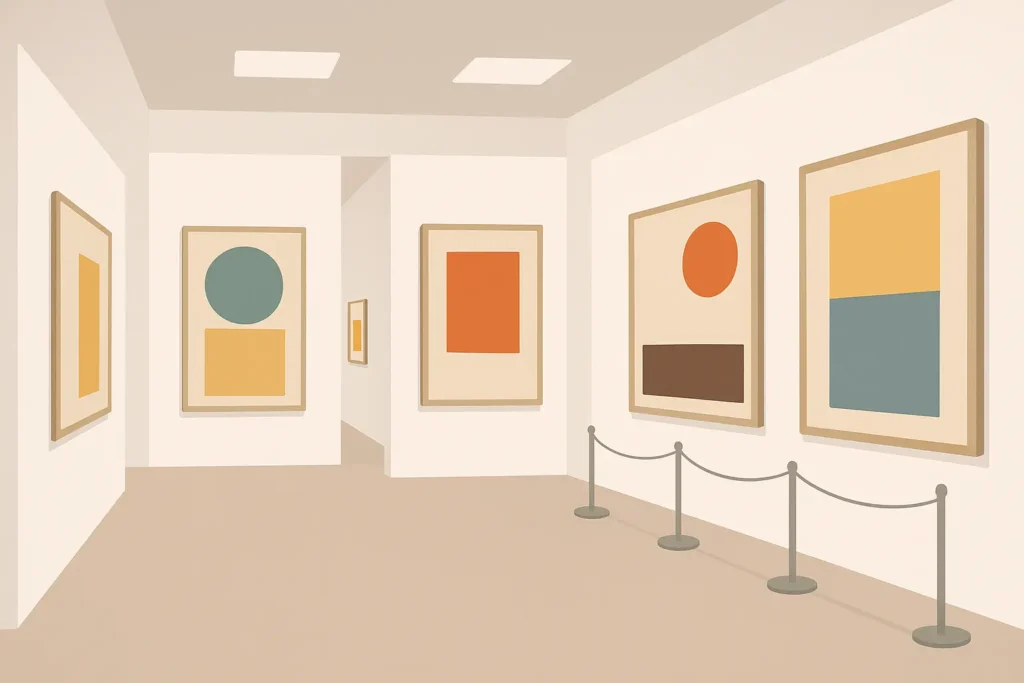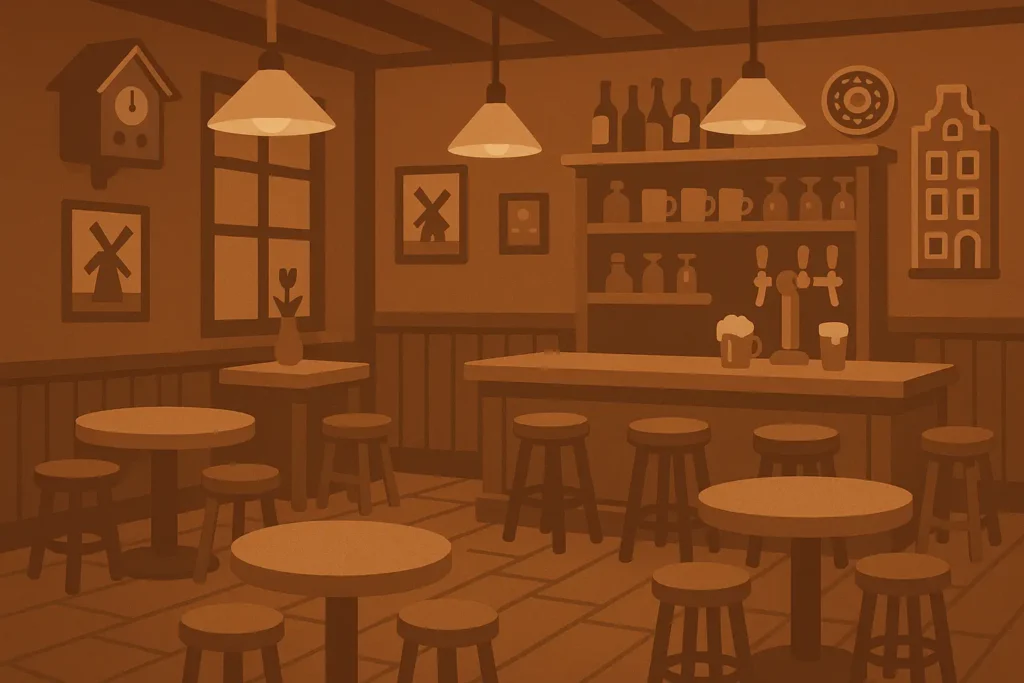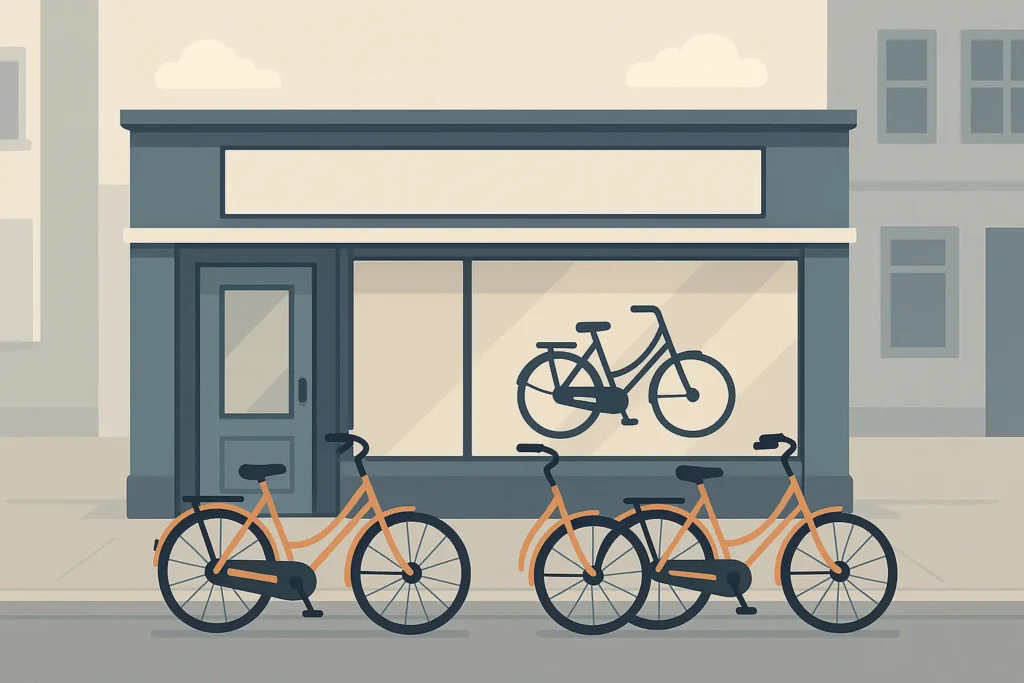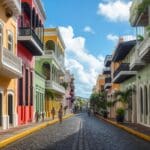Amsterdam attracts over 20 million visitors annually, making it one of Europe’s most popular destinations. I discovered this firsthand during my first solo trip to the city three years ago, when I thought I could just show up and figure it out as I went. Standing in that endless queue outside the Anne Frank House without a ticket, watching tour groups glide past on canal boats I couldn’t board, I realized Amsterdam caught me totally off guard. That experience taught me you need backup plans for your backup plans – because sometimes your first five ideas just don’t work out.
Avoid travel stress — plan smarter with our Vacation Planner to create flexible itineraries and backup options before you go.
Quick Resources:
• Vacation Planner — Build your dream trip itinerary and plan smarter.
• AI Wedding Planner — Simplify group travel and celebration logistics with expert-level coordination.
• Bachelorette Party Planner — Organize your bachelorette getaway perfectly from start to finish.
• Bachelorette Budget Calculator (Free) — Keep your travel spending under control and stress-free.
• All Wedding Tools — Explore every planning tool in one place.
TL;DR
- Amsterdam requires advance planning – Anne Frank House and Van Gogh Museum sell out weeks ahead (learned this the hard way)
- Budget ranges are wild: €35/day (instant ramen life) to €200+/day (living like royalty)
- Spring tulips are gorgeous but you’ll be elbow-to-elbow with every tourist on Earth
- Everyone bikes – it’s terrifying but necessary, and no, Dutch people don’t wear helmets
- Three days is the sweet spot for first-timers who want to see stuff without dying of exhaustion
- Solo travelers love Amsterdam because locals speak English and won’t judge you for eating alone
- Winter is cheap, dark, and actually shows you how real Dutch people live
Why Amsterdam Planning Will Save Your Sanity
Amsterdam isn’t your typical “just wander around” European city. Sure, you can walk across the historic center in 30 minutes, but that compact size creates chaos. The Anne Frank House releases tickets every Tuesday at 10 AM Amsterdam time for slots six weeks out – and they disappear faster than stroopwafels at a tourist market.
The city completely changes personality with the seasons. Spring brings tulip madness and prices that’ll make you cry, while winter offers cozy café culture without the tourist markup. Summer means festival energy but also crowds that make you question humanity, and fall delivers that perfect balance where you can actually move around and think.
Your amsterdam itinerary choice impacts everything from where you sleep to whether you’ll survive Dutch bike traffic. Staying near Museum Quarter puts you walking distance from major attractions but costs more than your rent back home. Meanwhile, Amsterdam’s bike situation means if you’re not cycling, you’re missing the real Amsterdam – but also, you might die. It’s complicated.
Build your perfect daily schedule with the Vacation Planner and make every Amsterdam day count.
Stuff You Need to Figure Out Before You Go
How Much Time and Energy Do You Actually Have?
Two days in Amsterdam means making brutal choices. You’ll hit the big names – Rijksmuseum, Van Gogh Museum, Anne Frank House, canal cruise – but you’ll miss the random café wandering that actually makes Amsterdam special. It’s like speed dating but with Dutch culture.
When planning group celebrations or trips, having professional coordination can make the difference between chaos and magic through expert timing and logistics that keeps everyone happy.
Planning a destination trip or celebration? Let the AI Wedding Planner manage your logistics and timing with ease.
| Duration | Must-See Stuff | Neighborhood Wandering | Day Trips | Perfect For |
|---|---|---|---|---|
| 2 Days | 3-4 major museums | One area if you’re lucky | Absolutely not | Weekend warriors, masochists |
| 3 Days | 5-6 attractions | 2-3 neighborhoods | Still no | First-timers, sane people |
| 4-5 Days | Everything important | Actually explore | Maybe one | Culture nerds, relaxed humans |
| 7+ Days | Literally everything | Live like a local | Multiple | Digital nomads, rich people |
Extended stays of five to seven days let you actually breathe. You can take day trips to those Instagram-famous tulip fields, explore neighborhoods where actual Dutch people live, and discover places that aren’t mentioned in every guidebook ever written. Week-long visits also let you do seasonal stuff – ice skating on frozen canals (if you’re lucky) or hitting multiple summer festivals.
A solid amsterdam 3 day itinerary gives you the perfect balance between seeing the important stuff and not feeling like you need a vacation from your vacation.
Money Talk: What Amsterdam Actually Costs
Amsterdam will drain your bank account faster than you’d expect. A basic hotel room averages €150-200 nightly during peak season, while hostels start around €35-50. Restaurant meals range from €15 for “casual dining” (good luck finding that near tourist spots) to €100+ for places that make you feel fancy.
Museum passes make sense if you’re a culture vulture. The Museumkaart costs €64.90 annually and covers 400+ museums nationwide – it pays for itself after three major Amsterdam museums. Day passes for public transport run €7.50, but bike rentals (€12-25 daily) are usually better value and way more fun.
Take Sarah, planning a 4-day Amsterdam trip on a normal person budget. She allocates €120/night for a decent hotel, €40/day for food (mixing restaurants with supermarket survival), €25/day for attractions with that museum pass, and €15/day for bike rental. Her €200 daily budget lets her see everything without eating instant ramen by day three.
Find your ideal Amsterdam budget in minutes with our Bachelorette Budget Calculator (Free).
Budget travelers survive on free stuff – Vondelpark picnics, canal-side walking, free museum days, and market browsing. Mid-range travelers balance paid attractions with local experiences, while luxury travelers just say yes to everything and deal with their credit card later.
Weather: It’s Always Complicated
Spring in Amsterdam means tulip fever and your wallet crying. Keukenhof Gardens explodes with color from mid-March through mid-May, but this beauty comes with crowds that make Disneyland look empty and prices that make New York look affordable. Hotel rates spike, restaurant reservations become impossible, and popular attractions require booking your firstborn child as collateral.
Summer brings Amsterdam’s festival season – Amsterdam Dance Event, Grachtenfestival, and countless outdoor events where you’ll pretend to understand electronic music. Terrace culture thrives as locals and tourists fight for canal-side spots. But this is peak tourist season with matching prices and crowds that make you question your life choices. The sheer number of things to do in amsterdam during summer creates both excitement and decision paralysis.
Fall offers Amsterdam’s best-kept secret – decent weather, manageable crowds, and prices that won’t require selling a kidney. The city’s cultural scene kicks back into gear as locals return from wherever Dutch people go in summer. Winter gives you the most authentic experience, with cozy brown cafés, potential canal ice skating (don’t count on it), and locals-only pricing on literally everything.
How Long Should You Actually Stay? (5 Options)
1. Weekend Warrior Madness (2 Days)
Day one is cultural boot camp. Start at Rijksmuseum when doors open at 9 AM (seriously, buy tickets online or you’re screwed), spend three hours pretending to understand Dutch Golden Age art. Grab overpriced lunch at the museum café, then rush to Van Gogh Museum for your timed entry slot. End at Stedelijk Museum if you’re still conscious, or collapse in Vondelpark with takeaway food like a normal human.
Day two tackles historic Amsterdam with military precision. Your pre-booked Anne Frank House slot (hopefully you got one) provides the emotional gut punch. Follow with Jordaan neighborhood wandering, then afternoon canal cruise for different city perspectives. Evening options include Red Light District exploration or brown café culture, depending on whether you want to feel uncomfortable or authentically Dutch.
This compressed amsterdam itinerary demands perfect timing but delivers maximum cultural impact for people who vacation like they’re training for the Olympics.
2. The Sweet Spot for Normal Humans (3 Days)
Day one owns the Museum Quarter without the panic. Morning Rijksmuseum deep-dive covers Dutch Golden Age paintings and that Asian art section everyone skips. Afternoon Van Gogh Museum with audio guide takes you through his artistic journey without making you feel stupid. Evening Vondelpark stroll and dinner somewhere that doesn’t bankrupt you.
Day two explores historic Amsterdam without dying. Anne Frank House morning visit (if you managed to get tickets) provides necessary historical context. Jordaan neighborhood lunch and wandering shows you where actual people live. Afternoon canal cruise offers water-level views, while evening Red Light District walk completes Amsterdam’s complicated story.
Day three embraces local culture. Morning bike rental and city cycling through areas tourists don’t usually see provides authentic transportation terror. Albert Cuyp Market lunch combines food sampling with people-watching. Afternoon Nine Streets shopping reveals Amsterdam’s boutique scene, while evening brown café experience shows you traditional Dutch pub culture.
Figuring out what to do in amsterdam makes more sense when you dedicate full days to specific themes instead of ping-ponging between random attractions.
For group celebrations or special occasions, professional planning support helps coordinate logistics while keeping everyone sane through expert event coordination.
Hosting a bachelorette or group trip abroad? Use our Bachelorette Party Planner to design the perfect itinerary for your crew.
3. Extended Explorer Mode (4 Days)
Days one through three follow the classic plan, but with breathing room between activities. Day four opens up possibilities – spring visitors can day-trip to Keukenhof Gardens for tulip overload, while year-round options include Zaanse Schans windmills and traditional Dutch village exploration that makes you feel like you’re in a postcard.
Alternative day four focuses on Amsterdam’s food scene through guided tours covering local markets, traditional Dutch cuisine, and international flavors reflecting the city’s multicultural personality. Cooking classes, brewery visits, and jenever tastings provide hands-on cultural experiences beyond standard tourist stuff.
This extended amsterdam itinerary lets you discover random awesome things while still hitting the important boxes.
4. Cultural Deep Dive (5 Days)
Five days adds neighborhood specialization and hands-on experiences. Dedicate full days to distinct areas – Jordaan’s boutiques and cafés, De Pijp’s multicultural dining scene, or NDSM’s creative industrial transformation. Activities like Dutch cooking classes, cheese-making workshops, or brewery tours provide deeper cultural understanding than just looking at stuff.
Day trips expand beyond Amsterdam to Utrecht’s medieval charm, Haarlem’s artistic heritage, or coastal towns like Zandvoort. These excursions show you Amsterdam’s role in broader Dutch culture while giving you a break from urban intensity.
With five days, the variety of things to do in amsterdam explodes, allowing for both planned cultural experiences and random discoveries that create actual memories.
5. Living Like a Local (7 Days)
Week-long stays let you pretend you’re Dutch. Rent apartments in residential neighborhoods, shop at local markets, and establish routines at neighborhood cafés where baristas start recognizing you. Multiple day trips become totally doable – Utrecht’s medieval center, Haarlem’s artistic legacy, coastal Zandvoort, or even Belgium if you’re feeling adventurous.
Seasonal activities gain importance with extended stays. Spring visitors experience both Keukenhof’s peak bloom and later tulip field cycling tours. Summer stays enable multiple festival experiences, while winter weeks allow for potential canal ice skating and extensive cozy café culture immersion.
Week-long stays change what to do in amsterdam from tourist checklist completion to actually understanding how this weird, wonderful city works.
Pick Your Amsterdam Vibe (5 Different Styles)
6. Art Lover’s Paradise
Art lovers need minimum four days to properly explore without getting museum fatigue. Day one deep-dives into Rijksmuseum’s Dutch Golden Age collection, focusing on Rembrandt’s “Night Watch” and Vermeer’s intimate scenes that make you feel like a voyeur. Afternoon visits to Rembrandt House Museum provide studio context and etching demonstrations.
Day two covers modern masters through Van Gogh Museum’s chronological journey and Stedelijk Museum’s contemporary collections that either inspire or confuse you. Day three ventures to NDSM Wharf via free ferry for street art exploration and alternative gallery spaces where actual artists hang out.
Advanced art itineraries include artist studio visits (if you know people), gallery opening events with free wine, and specialized tours focusing on Amsterdam School architecture that most people walk past without noticing.
This specialized amsterdam itinerary caters to serious art enthusiasts who want comprehensive cultural immersion beyond typical tourist museum speed-runs.
7. History Buff’s Time Machine
Historical Amsterdam requires chronological planning to avoid confusion. Begin with medieval foundations at Amsterdam Museum, exploring city development from fishing village to global trading empire. Begijnhof’s hidden courtyard reveals religious history most people miss completely.
World War II history centers on Anne Frank House but extends to Jewish Historical Museum, Resistance Museum, and walking tours through former Jewish Quarter. These sites provide comprehensive understanding of Amsterdam’s wartime experience and recovery that goes way beyond what you learned in school.
Contemporary history emerges through neighborhood exploration – immigration patterns visible in De Pijp’s multicultural dining, urban renewal projects in Eastern Docklands, and creative transformation of former industrial sites like NDSM Wharf.
8. Foodie’s Amsterdam Adventure
Amsterdam’s food scene demands strategic planning across neighborhoods and price points. Traditional Dutch experiences include cheese tastings at Reypenaer, jenever sampling at House of Bols, and herring from street carts (it’s actually good, trust me).
Consider Marcus, a food enthusiast planning his Amsterdam culinary adventure. Day 1: morning cheese tasting at Reypenaer (€22), lunch at Albert Cuyp Market sampling stroopwafels and random vendor food (€15), afternoon Dutch cooking class learning bitterballen and erwtensoep (€85), dinner at Restaurant Greetje for modern Dutch cuisine (€65). This €187 food-focused day provides authentic experiences from traditional to contemporary Dutch culture – assuming his stomach survives.
International flavors reflect Amsterdam’s multicultural character. De Pijp offers authentic Surinamese cuisine that’ll change your perspective on Dutch colonialism, while Indonesian rijsttafel represents colonial connections through actually delicious food.
Hands-on experiences include cooking classes teaching traditional Dutch techniques, brewery tours at Brouwerij ‘t IJ explaining local beer culture, and food tours combining tastings with neighborhood exploration.
9. Nightlife Explorer’s After-Dark Adventures
Amsterdam nightlife spans from tourist traps to authentic local scenes. Red Light District tours provide historical context beyond surface-level gawking, while nearby bars and clubs offer continuation options if you’re feeling brave.
Traditional brown cafés represent authentic Dutch drinking culture – neighborhood pubs where locals linger for hours over beer and conversation. These places provide cultural immersion and often feature live music or quiz nights where you can embarrass yourself in multiple languages.
Contemporary nightlife includes craft cocktail bars, electronic music venues (Amsterdam hosts major dance festivals), and late-night eateries serving everything from traditional Dutch snacks to international fusion cuisine for when you make questionable 2 AM food decisions.
10. Nature and Outdoor Adventures
Amsterdam’s outdoor opportunities extend beyond canal cruises and park picnics. Vondelpark provides central green space with playgrounds, open-air theater, and jogging paths where you can pretend to be healthy. Amsterdamse Bos offers more extensive outdoor activities including rowing, cycling trails, and seasonal events.
Cycling tours venture beyond city limits into traditional Dutch countryside that looks exactly like the postcards. Routes pass working farms, historic windmills, and polder landscapes showcasing Netherlands’ ongoing battle with water. Seasonal highlights include tulip field tours (spring) and autumn color cycling through rural areas.
Water activities include canal kayaking for unique city perspectives, sailing lessons on IJsselmeer, or day trips to coastal areas like Zandvoort for actual beach experiences. Winter activities might include ice skating on frozen canals (don’t count on it) or indoor climbing facilities.
Nature-focused things to do in amsterdam prove the city offers surprising outdoor diversity for urban explorers seeking fresh air and physical activity.
For outdoor celebrations or group adventures, professional coordination keeps everyone together and safe through expert group management.
Broke, Comfortable, or Rich? (4 Budget Levels)
11. Broke College Student Survival (Under €50/day)
Surviving Amsterdam on €50 daily requires creativity and zero shame. Hostel accommodation (€25-35 nightly) provides the foundation, while free walking tours offer professional guiding without mandatory costs (just tip what you can). Vondelpark picnics with Albert Heijn supermarket supplies cost a fraction of restaurant prices and taste better than most tourist food anyway.
| Budget Level | Daily Cost | Where You Sleep | What You Eat | How You Move | What You See |
|---|---|---|---|---|---|
| Broke Student | €35-50 | Hostel dorms | Supermarket + street food | Walking + occasional bike | Free tours, parks, some museums |
| Normal Human | €75-150 | 3-star hotels | Mix of restaurants/markets | Bike rental + public transport | Museum passes, paid tours |
| Living Well | €200+ | 5-star hotels | Fine dining | Private transport | Private tours, exclusive stuff |
Free museum access exists on specific days – many museums offer free entry for residents, and some extend this to all visitors on designated days. Research current policies before arrival or just show up and ask nicely. Rijksmuseum gardens provide free outdoor art viewing, while canal-side walking costs nothing but delivers those Instagram shots everyone expects.
Street food and market samples stretch food budgets. Albert Cuyp Market vendors often provide free tastings if you look interested, while FEBO’s automated wall dispensers offer cheap traditional Dutch snacks that taste exactly like you’d expect automated food to taste.
12. Normal Human Budget (€75-150/day)
Mid-range budgets unlock Amsterdam’s full potential without constant financial anxiety. Boutique hotels (€100-150 nightly) provide comfort and location advantages, while restaurant meals become feasible alongside market lunches and café stops.
Museum passes make financial sense at this level. Major attractions like Anne Frank House, Van Gogh Museum, and Rijksmuseum fit comfortably within daily allocations. Guided tours, canal cruises, and bike rentals enhance experiences without budget panic attacks.
Neighborhood exploration includes both free activities and paid experiences – shopping in Nine Streets, dining in Jordaan, or evening entertainment in various districts. This budget enables authentic local experiences while covering tourist highlights without choosing between them.
13. Money’s No Object (€200+/day)
Luxury Amsterdam eliminates all constraints while maximizing exclusive experiences. Five-star hotels like Waldorf Astoria or The Hoxton (€300-500 nightly) provide prime locations and service that makes you feel important. Private transportation removes public transit concerns while enabling flexible scheduling.
Exclusive experiences include private museum tours, helicopter tours of Dutch countryside, private cooking classes with actual chefs, and access to sold-out events through concierge magic. Michelin-starred dining at restaurants like Ciel Bleu provides world-class culinary experiences that justify the prices.
Private guides offer personalized itineraries, insider access, and cultural context unavailable through standard tours. Luxury travelers access private canal boats, exclusive shopping experiences, and premium cultural events that create genuinely unique Amsterdam memories.
14. Completely Free Amsterdam
Free Amsterdam requires research but delivers authentic experiences. Vondelpark provides extensive free entertainment – playgrounds, open-air theater, jogging paths, and people-watching opportunities that cost nothing but time. Canal-side walking offers unlimited exploration and photography without entry fees.
Free museum access occurs on specific days – research current policies for Rijksmuseum, Van Gogh Museum, and smaller galleries. Many churches offer free entry and architectural viewing, while markets like Albert Cuyp provide cultural immersion without purchase requirements.
Free walking tours (tip-based) provide professional guiding and cultural context. Street art exploration in NDSM requires only ferry fare (often free), while architectural tours through neighborhoods cost nothing but curiosity and comfortable shoes.
When to Go Without Losing Your Mind (4 Seasons)
15. Spring Tulip Madness
Spring tulip season transforms Amsterdam into floral paradise but demands serious strategic planning. Keukenhof Gardens (mid-March through mid-May) requires advance booking and early arrival to avoid crowds that make Black Friday look civilized. Peak bloom timing varies yearly based on weather conditions, so you might get gorgeous flowers or expensive disappointment.
City-based spring activities include Bloemenmarkt flower market exploration, tulip field cycling tours through surrounding countryside, and outdoor terrace dining when weather permits. Photography enthusiasts find unlimited opportunities in both urban and rural settings, plus everyone’s doing the same shots anyway.
Spring challenges include unpredictable weather (pack everything), premium pricing that hurts your soul, and massive crowds at popular attractions. Backup indoor plans become essential, while accommodation and restaurant reservations require months of advance planning.
16. Summer Festival Energy
Summer Amsterdam explodes with festival energy and outdoor culture. Amsterdam Dance Event, Grachtenfestival, and countless smaller events create continuous entertainment options for people who like crowds and loud music. Terrace culture thrives as locals and visitors fight for canal-side spots.
Extended daylight hours (sunset after 9 PM in midsummer) enable longer exploration days and evening activities that stretch your energy reserves. Canal cruises, outdoor dining, and park activities benefit from warm weather and extended light.
Summer challenges include peak tourist crowds that make you question humanity, premium pricing on everything, and accommodation scarcity. Popular restaurants require reservations made from your previous trip, while major attractions experience longest wait times. Heat waves make cycling and walking uncomfortable during midday hours.
17. Fall Secret Season
Autumn delivers Amsterdam’s best-kept secret – ideal weather, manageable crowds, and reasonable pricing. Cultural institutions operate at full capacity as locals return from wherever they disappear to in summer, while tourist numbers drop to actually manageable levels.
Indoor cultural activities gain prominence as weather becomes less predictable. Museums, galleries, theaters, and concert venues offer full programming without summer’s tourist crush. Brown café culture thrives as temperatures cool and locals seek cozy indoor gathering spaces.
Autumn-specific activities include cultural event calendars, seasonal food offerings, and comfortable cycling weather. Photography benefits from autumn light and fewer crowds blocking your shots at popular viewpoints.
18. Winter Authenticity
Winter Amsterdam reveals authentic local culture without tourist overlay. Cozy brown cafés become community centers where locals gather for warmth, conversation, and traditional Dutch comfort. Indoor attractions operate without crowds, enabling leisurely museum exploration and cultural immersion.
Unique winter activities include potential canal ice skating (don’t count on it but hope anyway), winter markets, holiday light displays, and seasonal food specialties. Indoor cultural programming reaches peak levels as locals seek entertainment during shorter daylight hours.
Winter advantages include lowest annual pricing, minimal crowds, and authentic local atmosphere. Challenges involve cold weather that penetrates your soul, shorter daylight hours, and weather-dependent outdoor activities requiring flexible planning.
A winter amsterdam itinerary rewards hardy travelers with the most authentic Dutch cultural experiences at the year’s most affordable rates.
Who You’re Traveling With Matters (4 Group Types)
19. Solo Traveler Freedom
Solo Amsterdam travel provides ultimate flexibility and authentic cultural immersion. Walking tours offer instant social connections and professional guiding, while museums enable self-paced exploration without group coordination drama.
Café culture welcomes solo diners and drinkers – brown cafés, coffee shops, and restaurants accommodate individual travelers without awkwardness. Many establishments feature communal seating or bar areas encouraging interaction with locals and fellow travelers who are also pretending to be confident.
Solo travel advantages include spontaneous schedule changes, complete budget control, and authentic local interactions. Safety considerations involve standard urban precautions, while social opportunities exist through tours, hostels, and cultural events.
Solo travelers planning special celebrations can benefit from professional support to ensure memorable experiences through expert coordination services that handle logistics while maintaining independence.
20. Couples Romance
Romantic Amsterdam emphasizes intimate experiences and scenic beauty. Canal cruises provide private moments with city views, while boutique hotels offer romantic settings and service that makes you feel special. Intimate restaurants with canal views create memorable dining experiences worth the Instagram posts.
Couples activities include sunset walks along canals, wine tastings where you pretend to know what you’re talking about, cooking classes for two, and private museum tours. Shopping in Nine Streets provides shared discovery experiences, while parks offer peaceful moments away from crowds.
Romantic planning considerations include advance reservations for popular restaurants, seasonal timing for outdoor activities, and accommodation location for walkable romantic exploration without getting lost and fighting about directions.
21. Family Survival Mode
Family Amsterdam balances adult cultural interests with child engagement needs and everyone’s sanity. NEMO Science Museum provides hands-on learning experiences that actually keep kids interested, while Artis Zoo combines entertainment with education. Vondelpark offers playground facilities and open space for energy release.
The Johnson family with two children (ages 8 and 12) plans their Amsterdam adventure by dedicating mornings to interactive attractions like NEMO Science Museum (€17.50/adult, children free), followed by lunch at family-friendly restaurants with actual children’s menus, afternoon Vondelpark playground time for parental sanity, and early evening canal cruises with child-appropriate commentary. This structure accommodates shorter attention spans while ensuring both educational value and entertainment for all family members without complete meltdowns.
Interactive experiences work best for families – canal cruises with children’s commentary, bike rentals with child seats (terrifying but necessary), and museums offering family programs. Timing becomes crucial with shorter attention spans and nap requirements affecting daily schedules.
Family considerations include stroller-friendly routes, child-appropriate dining options, and backup indoor activities for weather contingencies. Many attractions offer family tickets and special programming for different age groups.
22. Group Celebration Chaos
Group celebrations demand advance coordination and flexible planning for inevitable drama. Brewery tours accommodate groups while providing structured activities and transportation between venues. Party boats offer private group experiences with unlimited drinks and canal views perfect for Instagram stories.
Keep your travel group on track and drama-free with the AI Wedding Planner — your all-in-one event organizer.
Nightlife exploration includes Red Light District tours, comedy shows, and club experiences designed for groups who want to make memories they’ll pretend to remember. Restaurant reservations become essential for large parties, while accommodation requires group booking coordination and someone designated to handle the inevitable complaints.
Group logistics involve designated coordinators, clear communication about costs and activities, backup plans for weather or venue issues, and safety management during nightlife activities. Success depends on advance planning and group consensus on activity preferences – good luck with that.
Group celebrations benefit from professional coordination to manage complex logistics and ensure everyone enjoys the experience through expert party planning services that handle details while maximizing fun.
Weird Specific Interests (3 Niche Options)
23. Photography Nerd Paradise
Photography Amsterdam requires technical planning and timing considerations for shots that don’t look like everyone else’s. Golden hour canal shots demand early morning or late evening positioning, while street photography benefits from market days and local events providing authentic subject matter beyond tourist poses.
Equipment considerations include weather protection for unpredictable Dutch conditions, portable gear for extensive walking, and backup batteries for cold weather performance. Lens variety enables both wide canal vistas and intimate architectural details that make your photos actually interesting.
Location scouting extends beyond obvious tourist spots to residential neighborhoods, industrial areas like NDSM, and seasonal locations like tulip fields. Legal considerations involve photography permissions at museums and basic respect for privacy in residential areas.
24. Shopping Therapy Session
Shopping Amsterdam spans from luxury boutiques to vintage treasures and everything in between. Nine Streets (De Negen Straatjes) offers unique local designers and specialty shops unavailable elsewhere, though half sell the same stuff with Amsterdam price tags. Albert Cuyp Market provides vintage finds and local crafts alongside food vendors .
Designer shopping concentrates in PC Hooftstraat and surrounding Museum Quarter streets, while vintage enthusiasts explore IJ-Hallen flea market (weekends only) for actual unique finds. Local specialties include Delft blue ceramics, Dutch cheese, and local fashion designers who charge accordingly.
Shopping considerations involve shipping arrangements for large purchases, tax refund procedures for non-EU residents, and market timing for best selection and prices. Many shops offer international shipping services for convenience and your credit card’s dismay.
25. Local Living Experiment
Local living Amsterdam demands flexibility and curiosity beyond standard tourist experiences. Residential neighborhood exploration reveals authentic daily life – local markets, community centers, neighborhood cafés, and residential architecture that tourists usually ignore.
Authentic experiences include shopping at neighborhood Albert Heijn supermarkets, attending local events and festivals, dining at neighborhood restaurants without tourist menus, and using public transportation like locals do. Language barriers become opportunities for cultural exchange and embarrassing moments.
Local immersion requires abandoning rigid schedules for spontaneous discoveries. Community events, local festivals, and neighborhood gatherings provide authentic cultural experiences unavailable through standard tourism channels and guidebooks.
The Real Deal on Top Amsterdam Plans
Classic Amsterdam 3-Day Reality Check
Day 1: Museum Quarter Cultural Boot Camp
Morning (9:00-12:00): Rijksmuseum deep dive requires pre-booked tickets (€22.50) and early arrival to avoid the human traffic jam. Focus on Dutch Golden Age paintings, particularly Rembrandt’s “Night Watch” and Vermeer collection, but don’t try to see everything or you’ll get museum brain. Audio guide (€5) provides essential context for non-Dutch art history backgrounds and makes you feel smarter.
Lunch (12:00-13:30): Museum café offers convenient but wallet-crushing options, while Vondelpark provides picnic alternatives with Albert Heijn supplies. Weather contingency planning essential because Dutch weather is moody and unpredictable.
Afternoon (13:30-16:30): Van Gogh Museum requires timed entry tickets (€19) booked weeks in advance or you’re screwed. Chronological layout tells his artistic story effectively, while audio guide explains techniques and historical context without making you feel stupid. Allow three hours minimum for comprehensive viewing without rushing.
Evening (17:00-19:00): Vondelpark stroll provides peaceful transition from cultural intensity and helps your brain process all that art. Nearby restaurants offer diverse dining options, from traditional Dutch to international cuisine reflecting Amsterdam’s multicultural character.
Day 2: Historic Amsterdam Without Dying
Morning (9:00-11:00): Anne Frank House demands advance booking (€16) often requiring months of planning and lightning-fast internet reflexes. Arrive precisely for timed slot – late arrivals forfeit tickets and your vacation dreams. Emotional intensity requires mental preparation and time processing afterward.
| Activity | How Long | What It Costs | Booking Hell Level | Best Time |
|---|---|---|---|---|
| Rijksmuseum | 3 hours | €22.50 | Weeks ahead | 9 AM opening |
| Van Gogh Museum | 2-3 hours | €19 | Timed slots, stressful | Afternoon |
| Anne Frank House | 1.5 hours | €16 | Months ahead, impossible | Morning |
| Canal Cruise | 1 hour | €15-25 | Recommended | Afternoon |
| Brown Café | 2+ hours | €20-30 | Just show up | Evening |
Late Morning (11:30-12:30): Jordaan neighborhood wandering provides cultural decompression through boutique shopping, café culture, and residential architecture. No specific agenda allows for spontaneous discoveries and local interactions that make travel actually memorable.
Lunch (12:30-14:00): Local Jordaan cafés offer authentic Dutch cuisine and atmosphere. Café de Reiger or similar establishments provide traditional Dutch lunch experiences with local clientele who might actually talk to you.
Afternoon (14:00-16:00): Canal cruise selection varies by operator and route (€15-25). Glass-top boats optimize photography opportunities, while commentary provides historical context. Route selection impacts neighborhoods viewed – central departures cover different areas than Waterlooplein starts, so choose wisely.
Evening (16:30-19:00): Red Light District exploration requires respectful approach and cultural sensitivity. Historical walking tours provide context beyond surface-level attractions, while nearby bars offer continuation options for evening entertainment and questionable decisions.
Day 3: Local Culture and Bike Terror
Morning (9:00-12:00): Bike rental from MacBike or similar operators (€12/day) includes helmet, lock, and basic repair kit. City cycling requires confidence with traffic rules and bike lane navigation that makes no sense to foreigners. Vondelpark and residential area routes provide safe introduction to Amsterdam cycling culture without immediate death.
Lunch (12:00-13:30): Albert Cuyp Market combines food sampling with cultural immersion. International vendors reflect Amsterdam’s multicultural character, while traditional Dutch snacks provide authentic local flavors and Instagram opportunities.
Afternoon (13:30-17:00): Nine Streets (De Negen Straatjes) shopping offers unique boutiques and specialty shops, though half sell the same stuff you can get anywhere with Amsterdam markup. Vintage stores, local designers, and specialty food shops provide distinctive retail experiences and wallet damage.
Evening (17:00-late): Brown café culture represents authentic Dutch social traditions. Café Hoppe, Café de Dokter, or similar establishments offer traditional atmosphere, local beer selection, and opportunities for cultural exchange with locals who might actually be friendly.
This comprehensive amsterdam itinerary breakdown ensures visitors maximize their three-day experience while maintaining flexibility for personal preferences and unexpected discoveries that make trips actually memorable.
Luxury Experience Reality Check
Accommodation: Waldorf Astoria Amsterdam or The Hoxton provide prime canal-side locations with premium service and historical significance. Rates (€300-500/night) include concierge services, premium amenities, and often exclusive access to sold-out attractions that make you feel important.
Day 1: Private canal tour (€200) offers personalized commentary and flexible timing without crowd concerns or crying children. Michelin-starred lunch at Ciel Bleu provides world-class cuisine with panoramic city views and prices that make your credit card weep. Private Rijksmuseum tour (€150) includes curator access and behind-the-scenes experiences unavailable to peasants.
Day 2: Helicopter tour of Dutch countryside (€400) provides unique perspectives of tulip fields, windmills, and polder landscapes that justify the expense. Private cooking class (€250) with renowned chef includes market shopping, hands-on instruction, and exclusive dining experience. Evening at De Librije delivers exceptional culinary artistry and Instagram bragging rights.
Transportation: Private driver service (€100-150/day) eliminates public transport concerns while providing flexible scheduling and local expertise. Premium vehicles ensure comfort while navigating Amsterdam’s narrow streets and impossible parking situations.
This luxury amsterdam itinerary eliminates all logistical stress while providing exclusive experiences unavailable to normal humans with normal budgets.
Budget Backpacker Survival Guide
Accommodation: Generator Hostel or similar establishments (€25-35/night) provide central location, social atmosphere, and basic amenities. Dormitory accommodation reduces costs while offering opportunities for fellow traveler connections and shared misery.
Day 1: Free walking tour (tip-based) provides professional guiding and cultural context without mandatory costs. Vondelpark picnic with Albert Heijn supplies costs fraction of restaurant prices while providing authentic local grocery experience and people-watching opportunities.
Day 2: Free ferry to NDSM provides transportation and sightseeing combined with industrial art exploration. Street art viewing costs nothing while delivering contemporary cultural experiences. Albert Cuyp Market sampling provides food experiences through vendor tastings and cultural immersion.
Transportation: Walking maximizes budget efficiency while providing intimate city exploration and sore feet. Occasional public transport day pass (€7.50) enables longer distances when necessary, while bike rental sharing reduces individual costs and terror.
Food Strategy: Supermarket shopping at Albert Heijn provides significant savings over restaurant dining. Stroopwafels, cheese, and bread create satisfying meals at fraction of tourist restaurant costs. Market sampling and free tastings supplement purchased food supplies and cultural understanding.
Matching Your Personality to Your Trip
Planning Personality Check
Your planning personality directly impacts itinerary success and stress levels. Detail-oriented planners thrive with comprehensive schedules, advance bookings, and backup options for weather or availability disasters. These travelers benefit from luxury or mid-range itineraries with confirmed reservations and structured activities that eliminate uncertainty.
Spontaneous travelers prefer flexible frameworks over rigid schedules that make them feel trapped. Budget backpacker or local living itineraries provide structure while enabling discoveries and schedule changes. These approaches work best for travelers comfortable with uncertainty and last-minute decisions that might be terrible.
Stress tolerance affects attraction selection and daily planning. High-stress travelers might avoid peak season crowds or complex logistics, while others thrive on busy environments and challenging navigation. Matching itinerary intensity to personal stress management ensures enjoyable rather than overwhelming experiences.
Group Drama Management
Group dynamics significantly impact itinerary selection and everyone’s sanity. Large groups require more structured planning, advance reservations, and clear communication about costs and expectations. Democratic decision-making processes help balance diverse interests while preventing the inevitable conflicts about where to eat.
Couples benefit from romantic-focused itineraries but need flexibility for individual interests and bathroom breaks. Family groups require child-friendly activities balanced with adult cultural experiences and frequent snack stops. Bachelor/bachelorette parties need high-energy activities with safety considerations and designated responsibility management for when things get messy.
Budget discussions become crucial for groups with varying financial capabilities. Clear communication about cost expectations, payment methods, and optional activities prevents awkward situations and ensures everyone can participate comfortably without resentment.
Energy and Physical Reality
Physical capabilities and energy preferences determine appropriate itinerary intensity and daily planning. High-energy travelers handle packed schedules, extensive walking, and late-night activities without complete exhaustion. These individuals benefit from comprehensive itineraries maximizing daily experiences and cultural immersion.
Lower energy travelers or those with mobility considerations need leisurely pacing, frequent rest stops, and accessible transportation options. Amsterdam’s historic nature creates accessibility challenges requiring advance research and alternative route planning for comfortable navigation.
Age considerations affect activity selection and timing preferences. Older travelers might prefer cultural activities over nightlife chaos, while younger visitors seek high-energy experiences and social opportunities. Matching itinerary energy levels to group capabilities ensures everyone enjoys their Amsterdam experience without complete burnout.
Bridesmaid for Hire: Your Amsterdam Celebration Partner
Planning the perfect Amsterdam experience shares remarkable similarities with orchestrating flawless celebrations. When your Anne Frank House booking gets cancelled, you need someone with creative problem-solving skills to find alternative historical experiences or negotiate last-minute availability through sheer determination.
Group coordination presents identical challenges whether managing wedding parties or Amsterdam travel groups. Balancing diverse interests, managing budgets, coordinating schedules, and maintaining group harmony requires the same interpersonal skills that make exceptional celebration support professionals invaluable for complex logistics.
For Amsterdam bachelorette parties, destination celebrations, or complex group travel, consider partnering with professionals who understand both celebration planning and destination logistics. The same attention to detail, proactive problem-solving, and ability to create magical moments that defines excellent wedding support translates perfectly to crafting unforgettable Amsterdam experiences.
Plan the ultimate Amsterdam bachelorette with the Bachelorette Party Planner — effortless coordination, unforgettable memories.
Professional celebration coordination extends beyond weddings to destination experiences, offering the same level of expert planning and stress management that ensures seamless execution of complex group travel and memorable experiences.
Ready to transform your Amsterdam adventure from stressful planning into seamless execution? Contact Bridesmaid for Hire today to discover how our celebration planning expertise can create your perfect Dutch getaway.
Explore all our expert planning tools — from weddings to travel — at All Wedding Tools.
Just Go Already
Look, Amsterdam is great, but it’s not going to change your life or solve your existential crisis. It’s a fun city where you can bike around, see some art, eat cheese, and drink beer by pretty canals. The planning can feel overwhelming, but honestly? Book your Anne Frank House ticket, bring a rain jacket, and figure out the rest when you get there.
The 25 itineraries here provide frameworks rather than rigid schedules that’ll stress you out. Your perfect Amsterdam experience might combine elements from multiple approaches – perhaps luxury accommodation with budget dining, or cultural attractions with outdoor adventures. The key lies in understanding your priorities, constraints, and what actually makes you happy before arrival, then remaining flexible enough to embrace unexpected discoveries.
Whether you choose the weekend warrior’s intensive approach or the week-long cultural immersion, remember that Amsterdam’s greatest treasures often emerge through spontaneous moments – conversations with locals in brown cafés, stumbling upon hidden courtyards, or discovering your new favorite cheese at Albert Cuyp Market. Plan thoroughly enough to avoid major disasters, but leave room for the serendipitous experiences that transform good trips into stories you’ll actually tell people.
Just as professional support enhances wedding celebrations, expert guidance can transform complex travel planning into seamless experiences through comprehensive coordination services that handle details while preserving the magic of discovery and spontaneous adventure.
1-800-BRIDESMAID
The Newlywed
Card Game
something extra to love
Read the weekly newsletter from Bridesmaid for Hire, 1-800-Bridesmaid, to hear about real stories, from strangers, who need advice on love, life, friendship, and so much more.
Looking for the perfect wedding gift for someone you adore? Grab The Newlywed Card Game. It's a fun and interactive game they can play on their honeymoon or future date nights.
